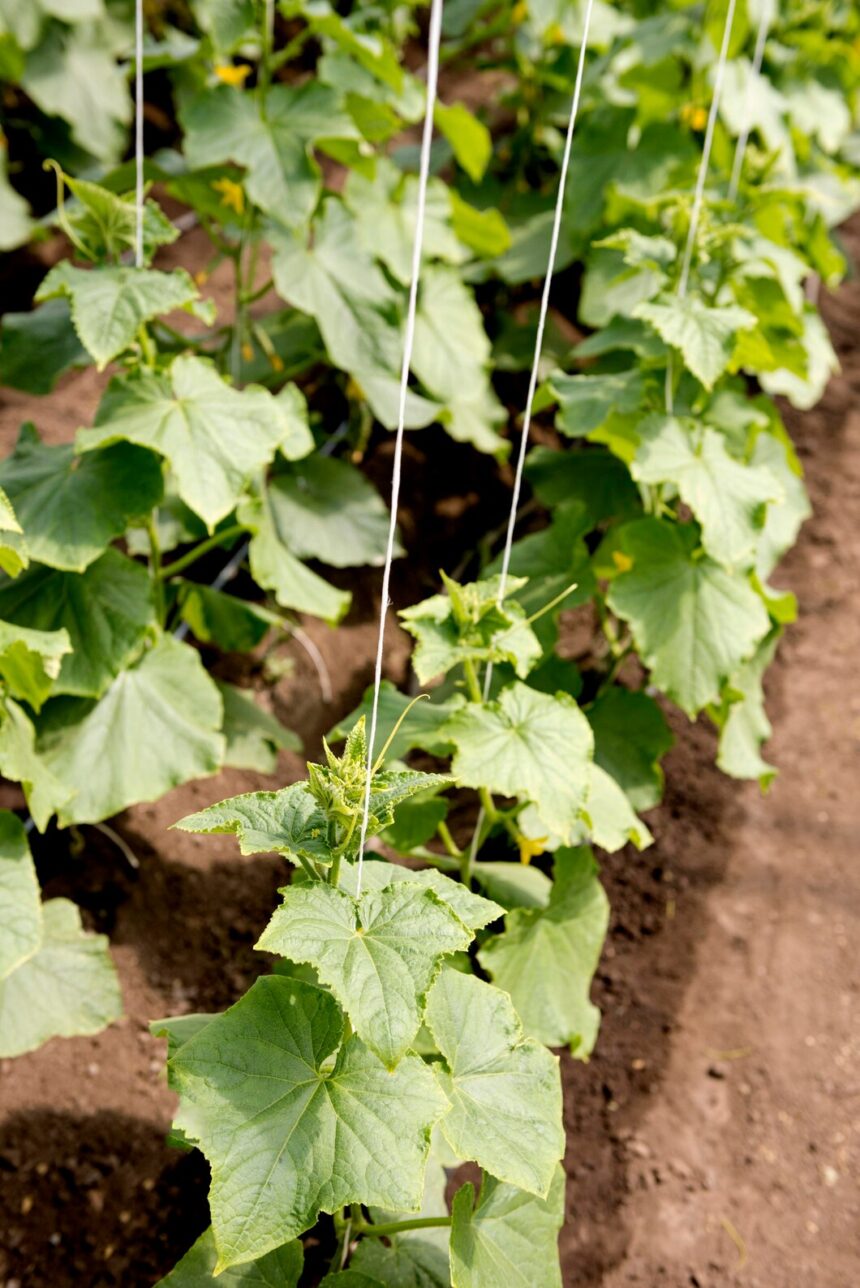Cucumber beetles are notorious pests that can wreak havoc on cucumber plants, causing damage to leaves, stems, and fruits. Recognizing the early signs of cucumber beetle infestations is crucial for protecting your cucumber crop and preventing extensive damage. Here are ten indicators to watch for:
1. Yellowing or Wilting Leaves
Cucumber beetles feed on the foliage of cucumber plants, causing leaves to yellow, wilt, or appear scorched. If you notice sudden discoloration or drooping leaves, it may be a sign of beetle feeding.
2. Irregular Holes in Leaves
Cucumber beetle larvae and adults feed on cucumber leaves, creating irregular holes and notches along the leaf margins. Inspect your cucumber plants regularly for signs of chewing damage.
3. Sticky Residue on Leaves
Cucumber beetles excrete a sticky substance known as honeydew while feeding, which can coat cucumber leaves and attract ants. If you observe a sticky residue on your cucumber plants, it may indicate beetle activity.
4. Yellow Spots on Leaves
As cucumber beetles feed on cucumber leaves, they may cause yellow spots or stippling on the leaf surface. These spots can gradually enlarge and merge, leading to widespread damage.
5. Scorched or Browned Edges on Leaves
Severe cucumber beetle infestations can result in scorched or browned edges on cucumber leaves, giving them a burnt appearance. This damage occurs as beetles consume leaf tissue and disrupt plant function.
6. Tunneling in Stems
Cucumber beetle larvae tunnel into cucumber stems, causing internal damage and weakening the plant structure. Look for small holes or entry points near the base of cucumber plants, where larvae may have burrowed.
7. Wilted or Misshapen Fruits
Cucumber beetle feeding can affect the development of cucumber fruits, causing them to become misshapen, stunted, or prematurely wilted. Inspect your cucumber plants for any abnormalities in fruit size, shape, or texture.
8. Egg Deposits on Undersides of Leaves
Adult cucumber beetles lay eggs on the undersides of cucumber leaves, often in clusters or rows. Check the undersides of leaves for small yellow or orange eggs, which may indicate the presence of beetles.
9. Visible Adult Beetles
Adult cucumber beetles are small, oval-shaped insects with distinctive black and yellow markings. If you spot adult beetles on or near your cucumber plants, it’s a clear sign of infestation.
10. Wilting or Yellowing Vines
Severe cucumber beetle infestations can cause cucumber vines to wilt, yellow, or die back prematurely. Monitor the overall health and vigor of your cucumber plants for signs of decline.
Prevention and Management Strategies
- Row Covers: Use floating row covers to protect cucumber plants from adult cucumber beetles and prevent egg laying.
- Crop Rotation: Rotate cucumber crops with non-susceptible plants to disrupt beetle life cycles and reduce infestation risk.
- Trap Cropping: Plant trap crops such as radishes or squash to attract and divert cucumber beetles away from cucumber plants.
- Natural Predators: Encourage natural predators such as ladybugs, lacewings, and parasitic wasps to control cucumber beetle populations.
- Biological Controls: Apply beneficial nematodes or microbial insecticides to soil to target cucumber beetle larvae.
- Handpicking: Remove adult beetles and larvae by hand and dispose of them in a bucket of soapy water.
- Neem Oil Spray: Apply neem oil spray to cucumber plants to deter cucumber beetles and disrupt their feeding behavior.
- Early Detection: Regularly monitor cucumber plants for signs of cucumber beetle activity and intervene promptly to prevent infestations from spreading.
Early detection of cucumber beetle infestations is essential for protecting your cucumber crop and preserving plant health. By recognizing the early signs of beetle activity—such as yellowing leaves, irregular holes, sticky residue, and wilting fruits—you can take proactive measures to manage infestations and minimize damage. Implementing preventive strategies, practicing vigilant monitoring, and employing integrated pest management techniques are key to effectively controlling cucumber beetles and safeguarding your cucumber plants. With careful attention and timely intervention, you can enjoy a healthy and productive cucumber harvest.
Join 'Farmers Mag' WhatsApp Channel
Get the latest Farming news and tips delivered straight to your WhatsApp
CLICK HERE TO JOIN






